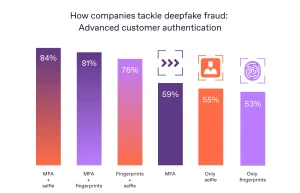Beyond the Cart: How Augmented Reality Try-Ons Are Reshaping Fashion Ecommerce

Let’s be honest. Online shopping for clothes can feel like a high-stakes gamble. You fall in love with a sweater on a perfectly lit model, click “add to cart,” and hold your breath for the delivery. Will it fit? Will the color look right in your dimly lit kitchen? That sinking feeling of a return is, well, a real pain point.
But what if you could virtually slip it on right from your living room? See how those earrings catch the light when you turn your head? This isn’t a far-off future. It’s happening now through augmented reality try-on experiences. And it’s changing the game for fashion brands and shoppers alike.
It’s Not Just a Gimmick: The Real Value of AR Try-On
At its core, an AR try-on uses your smartphone or computer camera to superimpose a digital version of a product onto your live image. It sounds like sci-fi, but the benefits are incredibly down-to-earth. Think of it as the bridge between the instant gratification of online shopping and the confidence of an in-store fitting room.
The numbers don’t lie. Shoppers using AR have a significantly higher conversion rate. Why? Because it slashes the two biggest anxieties in fashion ecommerce: fit and style. You’re not just looking at a static image; you’re experiencing the product on you. This personalized visualization builds a powerful connection that a simple photo gallery just can’t match.
Where AR Fits In Your (Virtual) Wardrobe
AR technology has gotten scarily good. It’s moved beyond clunky, floating graphics to sophisticated, realistic overlays. Here’s a quick look at what’s possible today:
- Eyewear & Accessories: The pioneers. Trying on glasses, sunglasses, and even hats is now a standard feature for many retailers. The tech accurately maps to your face shape and ears.
- Makeup & Beauty: A massive arena. Users can test thousands of lipstick shades, eyeshadows, and foundations in seconds, seeing how the pigments interact with their unique skin tone.
- Watches & Jewelry: See how a bracelet drapes over your wrist or how a necklace sits on your collarbone. The reflection and metal sheen are rendered with stunning accuracy.
- Footwear: Point your camera at your feet, and a pair of sneakers appears, allowing you to walk around and see them from every angle.
- Full-Body Apparel: This is the holy grail, and it’s advancing fast. Using either a “virtual mirror” or a mannequin model with your dimensions, you can see how a dress fits and flows, or how a pair of jeans hugs your silhouette.
The Tangible Benefits for Fashion Brands
Sure, it’s cool tech. But from a business perspective, it’s a strategic powerhouse. Implementing a virtual try-on solution for fashion isn’t just about being trendy; it’s about solving fundamental ecommerce problems.
Slash Return Rates (And Save Your Bottom Line)
Returns are the Achilles’ heel of online fashion. They’re costly, logistically messy, and bad for the environment. AR directly attacks the root cause: “not as described.” When customers have a clearer, more realistic expectation of a product, they make more informed purchases. The result? Fewer items coming back. It’s that simple.
Boost Confidence and Crush Cart Abandonment
How many times have you filled a cart only to second-guess yourself and close the tab? AR injects a dose of certainty into that process. It transforms the abstract into the tangible. This reduced purchase hesitation is a direct driver for higher average order values and a lower cart abandonment rate. Customers feel sure. And sure customers click “buy.”
Elevate Engagement and Brand Perception
An AR try-on is memorable. It’s fun. It’s something users share with friends—”Look at this!” This creates a powerful, positive brand association. You’re not just another online store; you’re an innovative, customer-centric brand that’s leveraging technology to make shopping better. That’s a huge differentiator in a crowded market.
Implementing AR: A Quick Reality Check
Okay, so it’s amazing. But is it right for you? Well, it depends. Here’s a no-nonsense look at the considerations.
| Consideration | The Lowdown |
| Cost & Tech | It’s an investment. You’ll need a development team or a third-party SaaS provider. The complexity (glasses vs. full-body clothing) directly impacts the price. |
| Product Catalog | Not every item needs AR. Start with high-return categories or bestsellers. Digitizing your entire inventory at once can be overwhelming. |
| User Experience (UX) | The tech must be seamless. If it’s slow, buggy, or hard to find on your product page, it will do more harm than good. Friction is the enemy. |
The key is to start with a focused, strategic pilot. Don’t boil the ocean. Pick a product line where AR can have the biggest immediate impact and build from there.
The Future is Trying Itself On
We’re only scratching the surface. The next wave of AR try-on technology is already taking shape, and it’s even more immersive. Imagine not just seeing a garment on you, but feeling its fabric through haptic feedback. Or having an AI stylist suggest complete outfits based on what’s already in your virtual closet.
The line between our physical and digital lives is blurring, and fashion is at the forefront. This shift isn’t about replacing the joy of touching fabric or the social experience of shopping with friends. It’s about augmenting it—giving us more power, more choice, and more confidence.
In the end, augmented reality try-ons are solving a deeply human problem: the need to feel sure, to express ourselves authentically, and to connect with the things we wear before we own them. It turns the screen from a barrier into a portal. And that, you know, is a change worth trying on for size.








